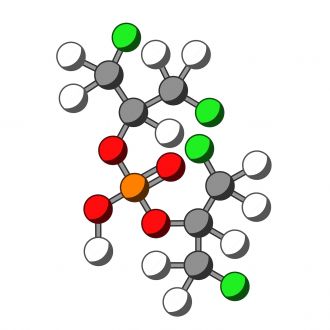Media release
From:
Neuroscience: Some chemicals damage supporting cells of the brain in the lab
Two classes of chemicals that are found in some disinfectants and flame retardants could impair the development of oligodendrocytes — a type of supporting cell in the brain — according to laboratory experiments reported this week in Nature Neuroscience. The findings highlight the need for further work to determine the potential impact of these compounds on human health.
People are regularly exposed to many environmental chemicals, and the potential health effects of most are unknown. Brain development may be particularly vulnerable to environmental toxicity. Most studies of the effects of environmental chemicals on the brain have focused on neurons, but less is known about effects on the brain’s support cells, including oligodendrocytes. Oligodendrocytes wrap around neurons, improving their ability to transmit information, and they form the brain’s white matter (also called myelin). Oligodendrocyte development continues from before birth into adulthood, and so these cells may be especially at risk of damage from toxic chemicals.
Paul Tesar and colleagues examined the effects of 1,823 chemicals on mouse oligodendrocyte development in cell culture dishes. Of the chemicals screened, 292 were found to kill oligodendrocytes, and a further 47 inhibited oligodendrocyte generation. The authors determined that the chemicals that caused damage belonged to two different classes. Quaternary compounds, found in some disinfecting agents, selectively killed oligodendrocytes, and organophosphate flame retardants, found in some furniture and building materials, arrested oligodendrocyte development. These effects were confirmed in mice and in cultured human oligodendrocytes. In addition to the laboratory experiments, the authors analyzed data from the US CDC’s National Health and Nutrition Examination Survey. Data collected between 2013 and 2018 showed that one flame retardant metabolite, BDCIPP, was present in almost all the urine samples from children aged 3–11 years that were examined (1,753 out of 1,763 children), and levels of BDCIPP in urine appear to have been increasing over recent years. Higher levels of BDCIPP, indicating greater exposure to organophosphate flame retardants, were associated with higher rates of gross motor dysfunction and need for special education, the authors note.
The authors conclude that more research is needed to pinpoint the effects of these chemicals and to assess their risk to human health.
Expert Reaction
These comments have been collated by the Science Media Centre to provide a variety of expert perspectives on this issue. Feel free to use these quotes in your stories. Views expressed are the personal opinions of the experts named. They do not represent the views of the SMC or any other organisation unless specifically stated.
Dr Ian Musgrave is a Senior Lecturer in the Faculty of Medicine, School of Medicine Sciences, within the Discipline of Pharmacology at the University of Adelaide.
We are exposed to thousands of chemicals each day, and the toxicity of many of these chemicals is poorly known. Testing the myriad of chemicals we are exposed to is a daunting technical challenge. One solution is to use tissue culture, where pure cultures of cells are grown and exposed to chemicals. However, the choice of tissue to be used can be limiting. This paper looks at the effect of a range of environmental chemicals on the cells that support nerves, oligodendrocytes, these cells are largely overlooked, although they play critical roles in helping nerves to function.
This paper not only looks at the support cells in isolation but uses a novel organoid method to mimic brain development with a mixture of oligodendrocytes and model nerve cells, as well as exposure of mice to compounds selected based on screening.
This approach allowed the authors to rapidly screen 1,823 chemicals, of which 292 killed oligodendrocytes. While this approach shows great promise the applicability of these results to humans is not clear. Although the organoid approach is a step forward, the chemicals are directly applied to the cells, and neither the blood-brain barrier, which limits access of chemicals to the brain, nor metabolism, which breaks down these chemicals, are present. Both these barriers will reduce the exposure of brain oligodendrocytes (and nerves) to chemicals.
Also, the concentrations and doses used are much larger than humans would be typically exposed to. The mouse pups were exposed to 200-2,000 times the proposed exposure limits to the flame retardant. The highest estimate of child exposure, 15.03 μg/kg-day, is enormously below the 10 mg/Kg-day given to the mouse pups. Similarly for cetylpyridinium chloride, the dose of 1 mg/Kg-day for mouse pups is well above the estimated maximum dietary exposure of children (0.014 mg/Kg-day).
This paper represents a significant advance in the ability to screen chemicals in important cell populations that were previously too difficult to examine for a large number of chemicals quickly. However, the results do not suggest an immediate risk to human health and the authors emphasise the need for further study.
Professor Ian Rae is an expert on chemicals in the environment from the School of Chemistry at the University of Melbourne. He was also an advisor to the United Nations Environment Programme on chemicals in the environment and is former President of the Royal Australian Chemical Institute
It's hardly surprising that chemicals in these two classes, quaternary compounds (quats) and organophosphates (OPs) show toxicity in cell cultures because their toxicity is well known. The quats are water soluble and used in domestic and industrial disinfectants to kill bacteria and viruses. In recent years they featured a lot in cleaning of structures to ward off COVID. It's hard to see how they could find their way to brain cells and the authors don't comment on this.
The OP flame retardants owe their activity to the phosphate group and are not to be confused with the organophosphate insecticides which are much more toxic. The OP flame retardants are fat-soluble and can be absorbed through the skin and find their way around the body. They have come into greater use in recent years as replacements for the organobromine compounds that have been banned under the Stockholm Convention on persistent organic pollutants (POPS).
During the deliberations about the organobromine compounds, the organophosphate flame retardants were discussed but no action was taken about them, because Stockholm is an intergovernmental convention about environmental impacts, whereas the evidence for the toxicity of the organophosphate flame retardants has come largely from studies of human development. Watch out for them to come to the attention of the Stockholm Convention when it's done struggling with organofluorines (PFAS)!
Oliver Jones is Professor of Chemistry at RMIT University in Melbourne, Australia
I think the screening platform the authors have developed in this study is useful and it is interesting to see the possible effects of certain chemicals on nerve cells. However, it is important to be careful about directly translating results from the lab to the real world.
When we're evaluating the risks of a chemical we need to consider things like the dose (how much of the compound we are exposed to) the route (how we are exposed) and the duration (how long we are exposed). It is not a question of if something is toxic or not but if it is toxic under the conditions to which we are likely to be exposed.
In this case, the authors have exposed cells in a Petri dish to a relatively high amount of these compounds which is not the same dose route or duration of exposure that humans might encounter normally. Many of the experiments were carried out on mice rather than human cells and mice are not mini humans.
So although the work reveals some potentially interesting data it should be treated as preliminary. As the authors themselves are good enough to admit more studies are required to determine the full impact (if any).
Multimedia




 International
International



